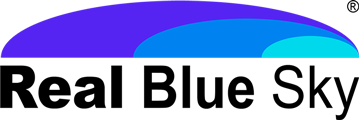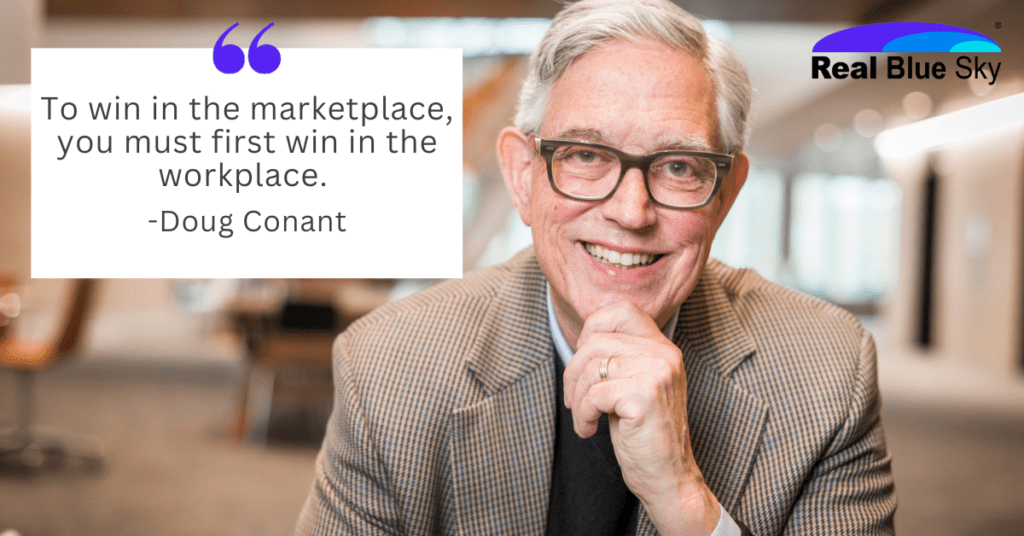Unlocking Growth: The Power of Adaptation and Innovation
Introduction
In the current economic climate, where unpredictability is the only constant, businesses are grappling with the reality of tightened budgets and a future that’s hard to forecast. It’s a time when growth strategies of the past may no longer bring the same results, and the quest for sustainability can seem like an uphill battle. Yet, it’s also a time ripe with potential for those willing to pivot and innovate.
 Our ethos is rooted in the power of transformation and adaptability. We understand the key to thriving isn’t just about weathering the storm—it’s about learning to dance in the rain. It’s about leveraging the strength of customer loyalty, the potential of existing relationships, and the efficiency of streamlined operations.
Our ethos is rooted in the power of transformation and adaptability. We understand the key to thriving isn’t just about weathering the storm—it’s about learning to dance in the rain. It’s about leveraging the strength of customer loyalty, the potential of existing relationships, and the efficiency of streamlined operations.
With a focus on cultivating deep connections, fostering a culture of engagement, and driving a business model centered on outcomes, growth is not just possible—it’s achievable.
As we delve into five dynamic strategies for brand growth, we’ll explore how prioritizing customer retention can significantly boost profits. We’ll discuss the art of enhancing customer experiences to keep your customers not just satisfied but delighted and loyal. And we’ll examine the wisdom of listening—truly listening—to what churn is telling us and how a commitment to continuous improvement can turn insights into action.
Let’s explore these strategies, not just as concepts, but as practical pathways to elevate your brand, even when the economy suggests you brace for less.
Cultivating Customer Loyalty and Reducing Churn
In the intricate dance of business growth, customer loyalty plays the lead role. It’s a well-documented fact that retaining an existing customer is significantly more cost-effective than acquiring a new one. A seminal study by Bain & Company underscores this, revealing that a mere 5% increase in customer retention can result in profit boosts ranging from 25% to a staggering 95%. The implications are clear: investing in customer loyalty isn’t just a good strategy; it’s an economic imperative.
The Economics of Retention
The numbers speak for themselves. The cost of winning over a new customer can be up to five times or more than keeping an existing one. But the benefits of retention extend beyond mere savings; loyal customers tend to buy more over time and can become advocates for your brand, effectively becoming a self-sustaining marketing channel. In a tight economy, where every dollar counts, focusing on the customers you already have becomes not just prudent, but crucial.
Enhancing the Customer Experience
 The cornerstone of customer loyalty is a superior customer experience. Personalized interactions that make customers feel valued can transform a one-time buyer into a lifelong patron. Loyalty incentives, such as rewards programs or exclusive offers, add another layer of engagement, giving customers a tangible reason to return. The goal is to create a customer experience so positive that it becomes a key differentiator in a crowded market.
The cornerstone of customer loyalty is a superior customer experience. Personalized interactions that make customers feel valued can transform a one-time buyer into a lifelong patron. Loyalty incentives, such as rewards programs or exclusive offers, add another layer of engagement, giving customers a tangible reason to return. The goal is to create a customer experience so positive that it becomes a key differentiator in a crowded market.
Understanding and Addressing Churn
Despite best efforts, customers will churn. It’s an inevitable part of business, but not all churn should be treated equally. By implementing robust feedback mechanisms, you can gain insights into why customers might be leaving.
Is it a product issue, a service mishap, or something more systemic? Once you understand the “why,” you can begin to address it. Tailored solutions that directly respond to the reasons for churn can turn a potential loss into a learning opportunity and, ultimately, a win.
A continuous improvement program is the engine that drives these efforts. By constantly evaluating and refining your approach to customer service, you can ensure that your strategies for retention and churn reduction are not just reactive but proactive. It’s about creating a cycle of feedback, learning, and improvement that keeps your brand resilient and responsive, even when economic conditions are less than favorable.
Let’s now dive into unlocking revenue opportunities with existing customers, focusing on strategies to grow wallet share that benefit both your business and your customers.
Unlocking Revenue Opportunities with Existing Customers
Growing wallet share is a strategic approach to increase the value of your existing customer base. It’s about finding opportunities within the relationships you’ve already built and encouraging customers to expand their engagement with your brand. In a tight economy, this approach is not just about survival; it’s about thriving by maximizing the potential of every customer interaction.
Upselling and Cross-Selling
Upselling and cross-selling are time-tested strategies that, when done right, can feel like a natural extension of the customer service experience. The key is to understand the customer’s needs and preferences deeply enough to offer products or services that genuinely add value to their lives. This requires a nuanced approach, one that prioritizes the customer’s needs over the hard sell. When customers feel understood and valued, they are more likely to consider additional offerings.
Bundled Offers and Promotions
Bundling products or services and creating special promotions can also incentivize customers to increase their spending. These strategies work by offering perceived value, making it more cost-effective for customers to purchase more than they initially intended. The trick is to bundle complementary items or services that enhance the customer’s experience or solve multiple needs at once. This not only increases the wallet share but also reinforces the customer’s decision to choose your brand over others.
The Perception of Savings with Bundling
The psychology behind bundling is rooted in the perception of savings. Customers are more inclined to purchase a bundle if they believe they are getting a better deal. This perception of increased value can make your offerings more attractive and “stickier”. When customers feel they are saving money, their satisfaction with the purchase increases, which can lead to repeat business and referrals—both of which are gold in a tight economy.
Next, we explore the crucial role of employee engagement and retention, and how investing in your workforce can lead to a more satisfied customer base and propel brand growth.
Prioritizing Employee Engagement and Retention
In the intricate dance of business growth, employee engagement and retention are the rhythm that keeps a company moving forward. Engaged employees are the lifeblood of any organization, especially in a tight economy where every interaction and every satisfied customer counts.
The Employee-Customer Connection
The correlation between employee engagement and customer satisfaction is undeniable. Engaged employees bring more energy and commitment to their roles, which translates into better customer service and a more positive customer experience. They are the ambassadors of your brand, the human touchpoint that can make or break customer loyalty. Investing in your employees is not just good HR practice; it’s smart business strategy.
Investing in Employee Growth
Employee development is a critical component of engagement. When employees feel that their company is investing in their growth, they are more likely to invest their effort and commitment in return. This means providing continuous training, competitive compensation, and clear pathways for advancement. Such investments demonstrate that you value your employees and see them as integral to your long-term vision, which can inspire them to go the extra mile for customers.
Fostering a Positive Work Culture
A positive work culture is another cornerstone of employee engagement. This includes promoting open communication, where employees feel heard and their ideas valued. It’s about recognizing their contributions, celebrating successes, and ensuring a healthy work-life balance. When employees feel respected and part of a supportive community, they are more likely to stay with a company and become its strongest advocates.
By nurturing a workforce that is engaged and committed, businesses can ensure that their customer service doesn’t just meet expectations—it exceeds them. In the next section, we’ll explore how outsourcing and operational audits can further enhance efficiency and drive growth, even when budgets are tight.
Read this article for more information on enhancing the employee experience: Transform EX by Cultivating Company Culture
Outsourcing, Audits, and Operational Efficiency
In a tight economy, the quest for operational efficiency becomes paramount. Businesses must scrutinize every process, every role, and every expense. This is where outsourcing and expert audits come into play, serving as catalysts for cost reduction and enhanced productivity.
The Outsourcing Edge
Outsourcing is not just a cost-cutting exercise; it’s a strategic move to tap into expertise and technology that may be beyond an organization’s internal capabilities. By delegating specific operations to specialized vendors, companies can benefit from economies of scale, access to global talent, and advanced technologies without the associated capital expenditures. This strategic shift allows businesses to focus on their core competencies while outsourced partners drive efficiency in supporting areas.
The Merits of an Expert Audit
 An expert audit of your operations can be a revelation. Independent consultants bring fresh eyes and specialized expertise to identify inefficiencies and areas for improvement that internal teams might overlook. They can provide actionable insights to streamline processes, enhance customer satisfaction, and ultimately, improve the bottom line. Such audits often reveal hidden opportunities for cost savings and productivity gains that can be transformative.
An expert audit of your operations can be a revelation. Independent consultants bring fresh eyes and specialized expertise to identify inefficiencies and areas for improvement that internal teams might overlook. They can provide actionable insights to streamline processes, enhance customer satisfaction, and ultimately, improve the bottom line. Such audits often reveal hidden opportunities for cost savings and productivity gains that can be transformative.
Operational Efficiency as a Growth Lever
Efficiency is not just about cutting costs; it’s about optimizing resources to deliver better value to customers. It’s about doing more with less, without compromising on quality or service. In a constrained economy, operational efficiency becomes a competitive advantage, enabling businesses to pivot quickly, scale operations to meet changing demands and maintain customer satisfaction through seamless service delivery.
Let’s conclude by actively embracing an outcome-centric business model, setting clear goals, and leveraging performance metrics to propel business growth in a challenging economic landscape.
Adopting an Outcome-Centric Business Model
In the current economic climate, where every investment and decision carries weight, businesses must pivot from activity-based strategies to outcome-centric models. This shift ensures that every action taken aligns with the broader vision of the company and contributes to tangible growth.
Clear Goal Setting
The foundation of an outcome-centric approach is clear and measurable goal setting. Businesses must articulate what success looks like, breaking down the overarching vision into specific, achievable objectives. These goals should be SMART: Specific, Measurable, Achievable, Relevant, and Time-bound. They serve as a roadmap, guiding the company’s efforts and investments towards the desired destination.
Performance Tracking
With goals in place, the next step is to establish Key Performance Indicators (KPIs) that monitor progress. These metrics act as a pulse check, revealing the health of various operations and initiatives. They enable businesses to track the effectiveness of their strategies and make data-driven decisions. Regularly reviewing these KPIs helps ensure that the company remains on course or identifies when a change in direction is necessary.
Strategic Flexibility
 An outcome-centric model thrives on strategic flexibility. It’s about being agile enough to adapt strategies based on performance data and market feedback. This adaptability is crucial in a tight economy, where customer preferences and competitive landscapes can shift rapidly.
An outcome-centric model thrives on strategic flexibility. It’s about being agile enough to adapt strategies based on performance data and market feedback. This adaptability is crucial in a tight economy, where customer preferences and competitive landscapes can shift rapidly.
Businesses that can pivot and evolve their strategies in response to these changes are more likely to outperform their rigid counterparts.
Adopting an outcome-centric business model is more than a strategic choice; it’s a survival tactic in a tight economy. It enables businesses to focus their energies on what truly moves the needle, ensuring that every effort contributes to sustainable growth. As we navigate these challenging times, let us remember that it is not just about surviving but about setting the stage for future success.
For further insights into how continuous improvement can drive your business forward, explore our article – Continuous Improvement in the Contact Center.
Conclusion: Navigating Through Economic Constraints with Strategic Resilience
As we draw the curtains on our exploration of brand growth in a constrained economy, it’s clear the challenges we face are significant—but not insurmountable. The strategies discussed are not just about weathering the storm; they are about building a vessel robust enough to sail through it and emerge stronger.
Cultivating customer loyalty and reducing churn is not merely a cost-saving measure; it’s an investment in the foundation of your business. By enhancing the customer experience and understanding the root causes of churn, we lay the groundwork for enduring relationships and sustained revenue.
 Unlocking revenue opportunities with existing customers through upselling, cross-selling, and bundled offers is a testament to the power of perception and the value of savings. It’s about growing wallet share not through expansion but through deepening the roots.
Unlocking revenue opportunities with existing customers through upselling, cross-selling, and bundled offers is a testament to the power of perception and the value of savings. It’s about growing wallet share not through expansion but through deepening the roots.
Employee engagement and retention are the heartbeats of any organization. A motivated workforce is the frontline of customer satisfaction and the driving force behind a positive brand image. Investing in your employees is investing in the future of your brand.
Outsourcing, audits, and operational efficiency are the lenses through which we can find clarity in complexity. They allow us to identify opportunities for cost reduction and productivity enhancements that might otherwise go unnoticed.
Finally, adopting an outcome-centric business model ensures that every step we take is a step towards our goals. It’s about aligning our actions with our aspirations and being agile enough to adapt when necessary.
In these tight economic times, let us not be daunted by the challenges but be driven by the opportunities they present. Let us embrace continuous improvement not just as a concept but as a core business strategy. And let us remember that in the economy of tomorrow, the brands that will grow are those that today are prepared to rethink, retool, and revitalize their approach to business.
For more insights and strategies on driving growth and continuous improvement, visit our articles page.


